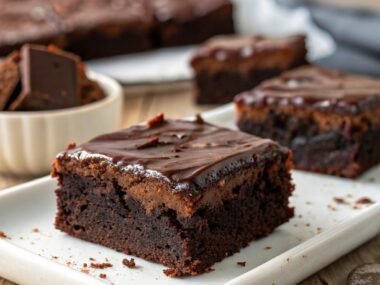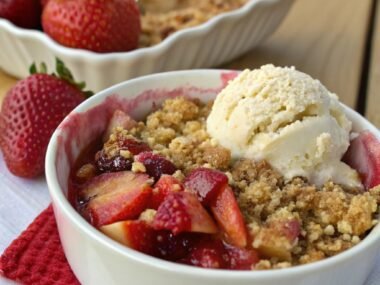Okay, Let’s Talk Mashed Potatoes…
Right, mashed potatoes. Seems simple, doesn’t it? But getting them *just* right, like, perfectly creamy mashed potatoes without any gluey weirdness? That took me a while, NGL. I remember this one disastrous Thanksgiving years ago… let’s just say the lumps were legendary, and not in a good way. My brother still brings it up. Anyway! After lots of trial and error (and maybe a few tears), this is the method I swear by. It’s nothing fancy, just good old fashioned comfort food done right.
Why These Are My Go To Spuds
Honestly? I make these whenever I need a guaranteed win at the dinner table. My family goes absolutely nuts for them – even my picky youngest! They’re just pure comfort. Perfect alongside basically anything (sausages, stew, a roast chicken… you name it). Plus, they’re actually pretty forgiving once you get the hang of it. That gluey texture I mentioned? Usually happens form over mashing, especially with a food processor (don’t do that!). We’ll avoid that, promise.
What You’ll Need (Give or Take)
- Potatoes: About 2 pounds (roughly 1kg) of good mashing potatoes. Yukon Golds are my absolute fave, they have this lovely buttery flavour already. Russets work well too, they get nice and fluffy. Avoid waxy potatoes like Red Bliss – they just don’t break down the same. You can learn more about potato types here if you’re curious.
- Salt: Plenty for the cooking water, and then more to taste later. Don’t be shy with the salt in the water, it flavours the potatoes form the inside out.
- Butter: Okay, this is important. Use *real* butter, unsalted is best so you control the saltiness. About 1/2 cup (113g), maybe a bit more? I usually just eyeball it. My gran always used salted butter, but I prefer adding my own salt later.
- Milk or Cream: Around 1/2 to 3/4 cup (120-180ml). Whole milk is great. Heavy cream makes them super decadent (maybe for holidays?). I sometimes use half and half if that’s what I have. Honestly, even 2% milk works in a pinch, just maybe add a smidge more butter. Warm it up first!
- Optional Extras: Black pepper (freshly cracked!), maybe some sour cream or cream cheese for extra tang, chopped chives or parsley… go wild.
Right Then, Let’s Mash Some Spuds!
- Prep the Potatoes: Peel ’em. Or don’t! I sometimes leave the skins on Yukon Golds for a more rustic vibe, just give them a good scrub. Cut them into roughly equal chunks, maybe 1.5 inch pieces? Doesn’t have to be exact, just helps them cook evenly.
- Boil ’em Up: Pop the potato chunks in a big pot. Cover them with COLD water – starting with cold water helps them cook more evenly too, I think. Add a generous amount of salt to the water (like, a tablespoon). Bring it all to a boil, then reduce the heat to a simmer.
- Cook Until Tender: Let them bubble away until they’re really tender. How long? Depends on the potato size, probably 15-20 minutes. Test by poking a piece with a fork or knife; it should slide in easily with no resistance. If you have to force it, they need more time.
- Drain Like You Mean It: This is key! Drain the potatoes really, really well. Like, let them sit in the colander for a minute or two to get rid of all the water. Soggy potatoes = sad mash. Sometimes I even put them back in the warm (empty) pot on the stove for a minute on low heat to steam off any extra moisture.
- Warm the Good Stuff: While the potatoes are draining, gently warm the milk/cream and butter in a small saucepan or the microwave. Don’t boil it, just get it nice and warm. Cold liquids make lumpy mash, nobody wants that.
- Mash Time!: Okay, here we go. Return the drained potatoes to the pot. Start mashing! A potato ricer gives the absolute smoothest results, honestly it’s worth getting one if you make mash often. But a regular hand masher works too! Just mash until they’re broken down. Don’t go crazy yet. This is usually where I sneak a taste of a plain bit of potato… chef’s privilege!
- Creamy Town: Pour in about half of the warm milk/butter mixture. Gently fold it in with a spatula or wooden spoon. Don’t beat it like crazy! Add more liquid gradually until you get the creaminess you like. Some like it thicker, some looser. You do you.
- Seasoning is Everything: Now taste it! Add salt and freshly cracked black pepper. Taste again. Keep going until it tastes *amazing*. This is where perfectly creamy mashed potatoes are truly made. Seriously, don’t under season.
- Serve!: Get it onto plates immediately while it’s hot and glorious. Maybe add an extra pat of butter on top? Go on.
Little Notes from My Kitchen
- Seriously, don’t over mash. Especially if you’re using a hand masher. It develops the starch and makes them gluey. Gentle folding is your friend once the liquid goes in.
- Make sure those potatoes are properly tender before draining. Undercooked potatoes = lumpy mash, no matter how hard you try.
- Warming the milk and butter first? Non negotiable for me now. Made such a difference once I started doing that.
- Did I mention drain them well? Yeah, do that.
Fun Variations I’ve Tried
- Garlic Heaven: Chuck a few whole, peeled garlic cloves into the water with the potatoes. Mash ’em right in. Delish.
- Cheesy Goodness: Fold in a handful (or two!) of grated cheddar, Gruyère, or even Parmesan at the end. Proper comfort food.
- Herby Delight: Fresh chives, parsley, or dill stirred in just before serving adds a lovely freshness.
- The Failed Experiment: Once tried adding horseradish. Sounded good? It was… potent. Maybe just a tiny bit next time, or perhaps just serve it on the side. My family wasn’t chuffed with that one!
What If I Don’t Have…?
No potato ricer? No worries! A regular potato masher works fine. Just be extra careful not to overwork the potatoes once you add the liquid. Mash first, then gently fold in the milk/butter. It might not be *quite* as ethereally smooth, but it’ll still be darn tasty. Avoid food processors or electric mixers though, that’s usually a one way ticket to Pasteville.

Storing Leftovers (If Any!)
Pop any leftovers in an airtight container in the fridge. They’ll keep for 2-3 days. Though honestly, in my house, they rarely last more than a day! They reheat okay in the microwave (add a splash of milk) or gently on the stove. I actually think the flavour is sometimes even better the next day? Maybe that’s just me.
Oh, random thought – sometimes I use leftover mash to top shepherd’s pie. It’s brilliant for that. Like this classic shepherd’s pie recipe, just swap the topping!
How We Eat ‘Em
We’re traditionalists here. A big dollop alongside sausages and gravy is peak comfort food for us. Also essential with roast chicken or beef. And obviously, Thanksgiving or Christmas wouldn’t be the same without a mountain of creamy mash!
Learn From My Mistakes (Pro Tips!)
- Don’t rush the boiling: I once tried cranking the heat up to boil them faster. Bad idea. Ended up with potatoes that were falling apart on the outside but still hard in the middle. Low and slow (well, a steady simmer) is better.
- Don’t add cold liquid: Yep, done this too when in a hurry. Lumps galore. Warming the milk/butter takes barely any extra time and makes a huge difference to the final texture.
- Taste, taste, taste!: Early on, I’d just chuck in a pinch of salt and hope for the best. Nope. You gotta taste and adjust seasoning right at the end. It’s what takes them form ‘meh’ to ‘WOW’.
Your Questions Answered (Probably!)
Can I make these ahead of time?
Yeah, kinda. You can make them an hour or two ahead and keep them warm in a slow cooker on the ‘warm’ setting (stir occasionally and maybe add a splash more warm milk if needed). Or reheat gently just before serving. They’re definitely *best* fresh though!
What are the *best* potatoes again?
My vote is always Yukon Gold! Russets (like Maris Piper if you’re in the UK) are a close second. Just avoid those waxy salad potatoes.
Help! My mash is gluey!
Ah, bummer! You probably overworked them, maybe with an electric mixer, or just mashed too enthusiastically? Or maybe used waxy potatoes? Next time, try a ricer or gentle hand mashing, and stick to floury potatoes.
Can I use water instead of milk/cream?
You *could* use some of the starchy cooking water… but honestly, it won’t give you that *perfectly creamy* result. The fat from the butter and milk/cream is kinda crucial for the flavour and texture we’re after here. Treat yourself!







